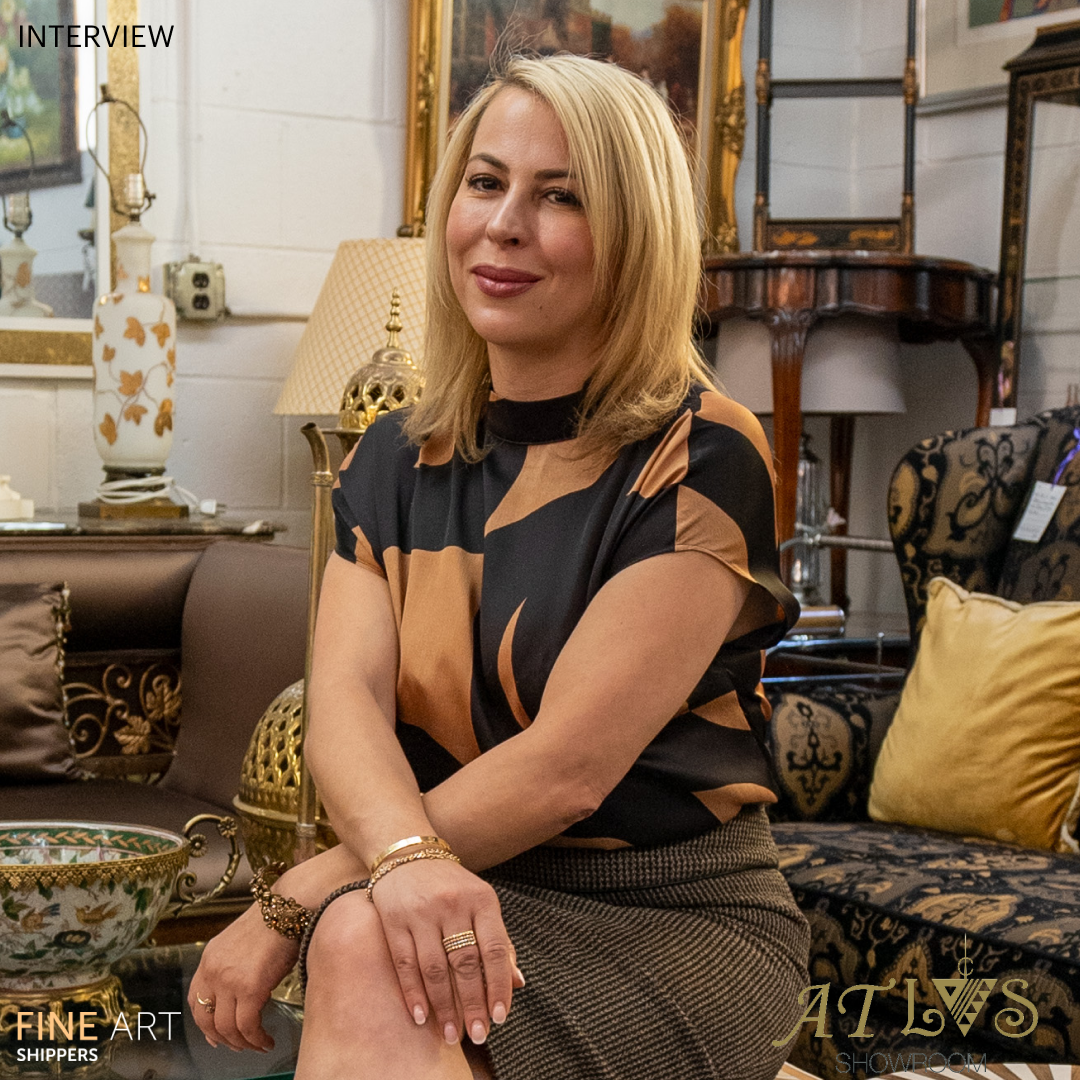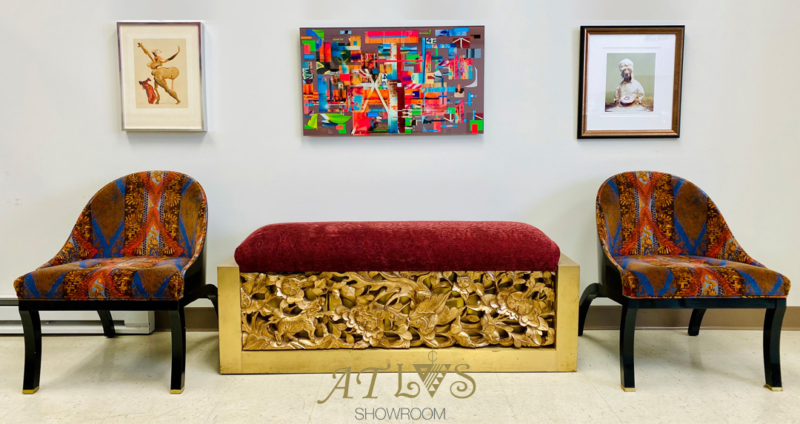Atlas Showroom sells antique, vintage & handmade furniture and fine art, spanning Art Deco, Mid-century modern, Moroccan design, and Hollywood Regency. Fine Art Shippers had a conversation with its founder, Wafah Jehou, about her entrepreneurial journey, the challenges and opportunities of doing business in both physical and digital realms, and the growing trend of purchasing vintage furniture over new pieces.
Atlas Showroom: Guided Labyrinth of Antiques and Contemporary Art
What inspired you to transition from an accomplished career in financial services to the world of high-end art, furnishing, and décor with Atlas Showroom?
Wafah Jehou: I've always wanted to work for myself, inspired by my father who built his own business from scratch. Although I received training in finance and worked in the sector for a decade, I eventually felt that the corporate world wasn't for me. Arts have been a passion of mine since I was young, but my knowledge wasn't deep enough. I began researching, trying to find a niche for myself. Eventually, I left the finance world in 2013 and fully committed to starting my own business, unsure of how it would turn out. But I was young and open to risks, which was good at that point.
How did your business evolve?
I launched Atlas Showroom with a focus on handmade designs from Morocco, which is where I'm originally from. I frequently traveled there, visiting local artisans and purchasing pieces directly from them. My prior career in finance afforded me little time for vacations, which distanced me from my own culture. Starting this business allowed me to reconnect with my roots and create a link between my homeland and New York, where I now live. This journey has been both personally and professionally rewarding. Over time, we set up our own workshop in Morocco designing and handmaking lighting and furniture.
As our business expanded, our offering grew to include Art Deco, Mid-century, and contemporary designs, as well as antiques from the 19th and 20th centuries. Today, we also source vintage and antique items from auctions, estate sales, and collectors. As clientele approached us with consignment requests, we began organizing our own auctions. Recently, we also started collaborating with four contemporary artists.
Contemporary art requires a different approach compared to antique and vintage pieces. What does your process involve?
Indeed, contemporary art is a completely different animal. Trust is essential when working with artists, as their work is deeply personal. Selling contemporary art requires understanding and valuing the creator’s emotional bond with their piece. We promote not only the artwork but also the artist and their vision. That’s why dialogue is crucial; we are always learning from them.
You have both a physical store in New York and a digital marketplace. What is the difference between the online and offline parts of your business?
Visiting our showroom feels like navigating a labyrinth of diverse and eclectic collections from various eras. I love seeing customers' reactions to our pieces. Before, we mostly relied on walk-ins. We did have an online presence, but it wasn't our main focus.
Since the pandemic, many galleries and showrooms, including ours, have faced challenges and have had to adapt. The dynamic shifted significantly after 2020. Currently, our online sales surpass those made in-store. However, many customers discover us online and then choose to visit the showroom to experience the pieces firsthand.
Atlas Showroom ships internationally. What is your approach to art logistics?
Art logistics is crucial in our business. I've personally witnessed damage that's both heart-wrenching and costly. It's distressing when unique and often irreplaceable antiques are damaged. Before, I even traveled overseas to oversee packing as I felt the need to be hands-on to ensure quality. Over time, I've grown confident in my overseas team's ability to handle it. Yet, I feel responsible for offering guidance to our clients on handling fragile items when they use their own shippers.
How would you describe your clientele today?
I've observed a shift in our clientele's demographics. While previously our vintage items appealed mainly to those aged 45-50 and older, we now see a younger audience showing interest. I believe it's driven by a few factors. First, the younger generation recognizes the unmatched quality of vintage items. Secondly, and perhaps more importantly, there's a growing emphasis on sustainability. With rising environmental concerns, people see value in reusing vintage items over buying new ones. Additionally, vintage pieces, especially from renowned designers, are now seen as investments. They retain or even increase in value over time due to their scarcity. This trend is encouraging and, hopefully, will continue.
Interview by Inna Logunova
Photo courtesy of Atlas Showroom


